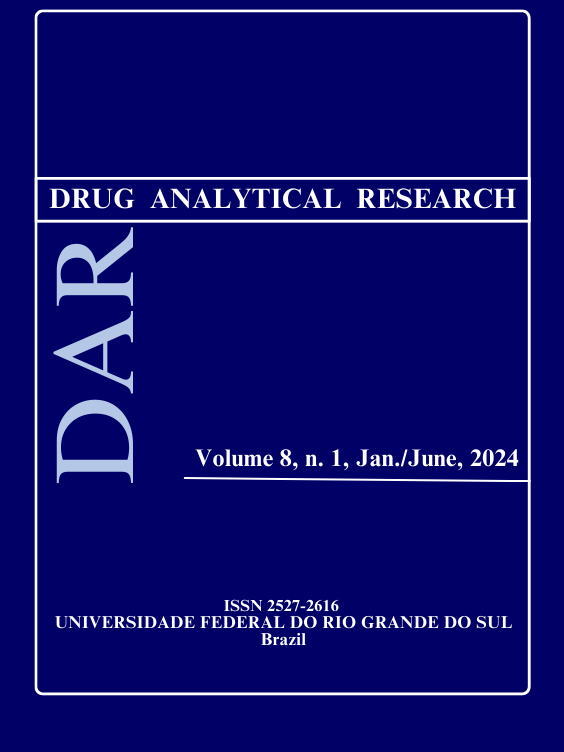Valproic acid extraction methods in human samples for gas chromatography analysis: a review
DOI:
https://doi.org/10.22456/2527-2616.138963Keywords:
valproic acid, sample preparation, gas chromatographyAbstract
Valproic acid (VPA) is widely used as an important drug for the treatment of epilepsy, seizures, bipolar disorders, and migraines. However, its narrow therapeutic range lead to risks of unintentional poisoning and potential suicide. Symptoms of VPA intoxication include drowsiness, hyperactivity, confusion, ataxia, coma, and sometimes can mimic brain death. Severe cases necessitate intensive care observation and evaluation of blood/plasma concentrations to determine the severity of poisoning. Analytical methods are crucial for monitoring drugs in biological fluids. This review aimed to describe the extraction methods used for the analysis of VPA in human biological samples using gas chromatography. Among 19 studies reviewed, liquid-liquid extraction (LLE), liquid phase microextraction (LPME), and solid-phase microextraction (SPME) are the most used extraction methods. Considering the laborious nature and large sample volumes required for LLE and solid-phase extraction (SPE), more efficient microextraction methods are needed. LPME, dispersive liquid-liquid microextraction (DLLME), air-assisted liquid-liquid microextraction (AALLME), and others offer promising alternatives. LPME, in particular, is favored ecologically due to reduced solvent usage compared to LLE. Novel approaches like dried blood spots (DBS) present emerging options for sample collection, helping in analytical and therapeutic monitoring contexts. Selection of extraction protocol hinges on method objectives, sample type, and laboratory capacity.
Downloads
Downloads
Published
How to Cite
Issue
Section
License
Copyright (c) 2024 Drug Analytical Research

This work is licensed under a Creative Commons Attribution-NonCommercial-ShareAlike 4.0 International License.
The Copyright holder of manuscripts published is Drug Analytical Research. Authors who publish with this journal are able to enter into separate, additional contractual arrangements for the non-exclusive distribution of the journal's published version of the work (e.g., post it to an institutional repository or publish it in a book), with an acknowledgement of its initial publication in this journal.
Licensing:
Creative Commons Attribution-NonCommercial-ShareAlike 4.0 International License
Users are allowed to read, download, copy, distribute, print, search, or link to the full texts of the articles, or use them for any other lawful purpose, without asking prior permission from the publisher or the author.



